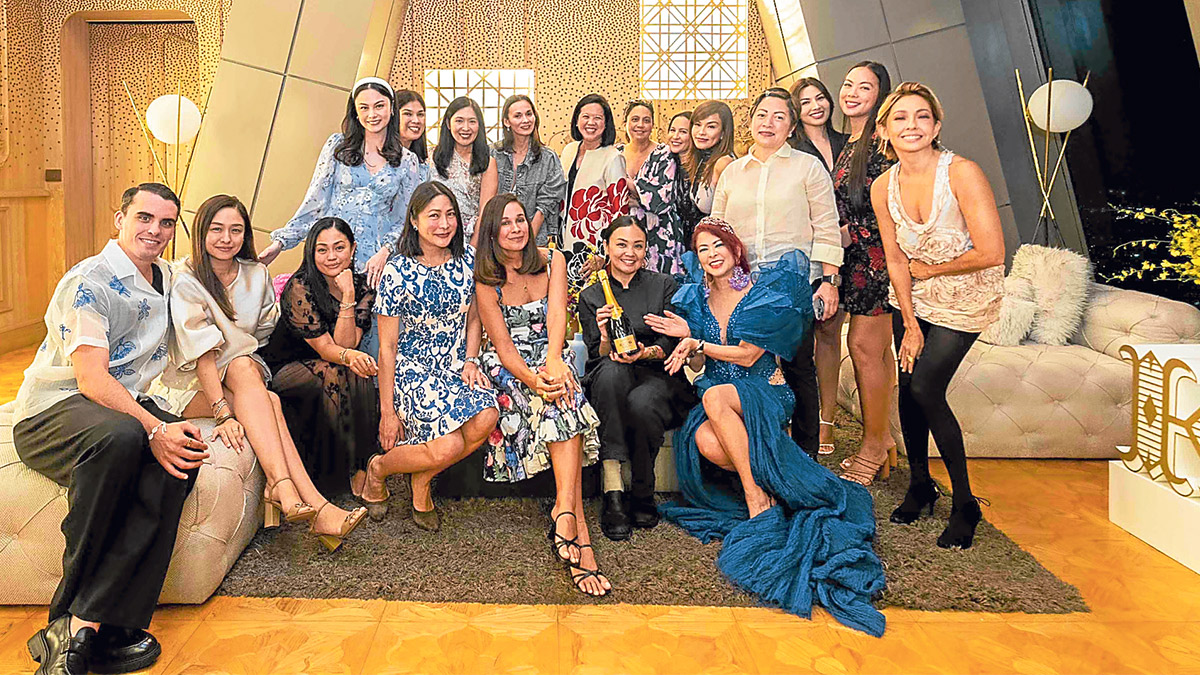Circa 1967, while I was working in a small startup agency, Link Advertising, we created an ad for Adler, a German-made typewriter. It had this headline: “Heil! Adler!”
The ad featured a fat funny man with the famous Hitler mustache doing the snappy “Heil Hitler!” salute.
Our creative director, the late Frankie Laccumbra, created the ad, and I thought it was wacky enough to catch attention.
The “Heil Adler” ad was published in BusinessDay (now BusinessWorld) with spillover circulation in Hong Kong. When officials of the German embassy in Hong Kong saw our ad, they were aghast. They immediately called the German embassy in Manila to do something about it, short of stopping the ad campaign.
The displeasure was relayed to my client, the late Junie Kalaw, general manager of Madis Inc., who in turn asked me to explain our side to the German consul in Manila.
In the German embassy, a smiling well-groomed diplomat welcomed me courteously. After the usual introduction, he went straight to the point. He requested that we stopped the publication of the “Heil Adler” ad, and he would consider it a big favor.
Like a typical ad executive passionate about his work, I was cocky—“Why? What’s wrong with the ad?”
“It’s Hitler!” he answered. “The German government is spending a huge amount of money to erase the memory of Hitler and all the symbols of Nazism in contemporary national life of the Germans.
“But Hitler is public property,” I answered belligerently. “A figure in history! Movies and television are full of World War II episodes showing Hitler. Right now Channel 7 is running ‘Combat,’ a war series in Europe showing German soldiers, with their swastikas and lots of ‘Heil Hitler’ footage.”
I was on a roll.
“Mr. Ordoñez, Hitler is not even German,” the consul said. “He’s Austrian!”
I felt at that moment that my belligerence was uncalled for.
The consul resumed, and this time his tone was friendlier. “Mr. Ordoñez, I’m sure you have other ideas, better than your Adler ad now.” End of conversation.
And end of Adler print campaign—not because I was urged to create an alternative ad, as the German consul suggested; the print ad budget had simply been totally spent.
Puritanical loyalty
Sometime in 2002, I got a call from my friend Butch Alejo, president and GM of Purefoods, giving our agency (Basic Advertising) the Purefoods Hotdogs assignment on a silver platter.
Was I ecstatic! I accepted pronto!
I’d been coveting Purefoods Hotdogs for years to add to our list of food market leaders. I really liked the product; its tender-juicy quality was simply the best in the world.
During those times, our agency’s reputation for successful campaigns for food and beverages was at an all-time high. Our food brands, all market leaders, were formidable: Jollibee, Chowking, Greenwich, Lucky Me and Magnolia Ice Cream.
We also had strong contenders in Argentina Corned Beef and 555 Sardines. Purefoods Hotdogs was a prize catch.
As soon as word got around that we got the Purefoods Hotdogs assignment, I got a note from Tony Tan, big boss of Jollibee, informing me of his objection to our handling Purefoods because of its partnership with Burger King, a direct competitor of Jollibee.
When I relayed Jollibee’s objection to Purefoods, I was told that Purefoods and Burger King operate independently, and their offices and headquarters are completely separate in the Philippines.
At this point I became highly sensitive to the fierce competition between fast-food brands in the same category. Was my face red! I had to apologize profusely to Butch Alejo of Purefoods. Up to now my face turns red when I recall the incident.
It turned out, on hindsight, that it was a simple case of wrong timing. (Eventually, Tony Tan of Jollibee added Burger King to his list of companies by buying majority of Burger King stocks.)
Meanwhile, another client, Century Pacific Food, also fired our agency on the same day despite our aborted Purefoods assignment. We were handling Century Foods, Argentina Corned Beef (competitor of Purefoods corned beef) and 555 Sardines.
The whole world collapsed on me. I felt bitter.
Century’s boss Richard Po (son of my good friend Richard Po Sr.) once asked me a favor, to waive a big talent fee commission, because he was trying to improve his revenue. I understood his request. I did him a favor.
I thought he didn’t have to fire us after the Purefoods assignment did not materialize. Like him, there were also times I wanted to improve my revenue.
We lost two accounts on a single day. I nearly went nuts.
Advertising is a business with clear growth limits. It cannot handle competing accounts. It can grow only organically by getting more assignments from its existing clients or acquiring more noncompetitive clients.
To beat the noncompetitive rule, the agency’s geniuses at Madison Avenue created a macrosolution by establishing advertising conglomerates, such as the WPP Group, Interpublic Group, Omnicom Group, Publicis Group and Havas.
The conglomerates bought global agency brands, which became exempted from the noncompetitive rule. Agencies in conglomerates are totally independent, with their exclusive proprietary data, their own culture and revenue objectives.
The big advantages of conglomerates rest on their ability to negotiate better media packages that are treated as wholesale and later retailed to different clients for additional agency revenues.
They did this by establishing new companies called media independents, which merged former agency media departments. Innovative.
While chasing my career in advertising, I made boo-boos. They were honest mistakes. Mostly misjudgments. I paid the price.
They were part of my managerial maturing.
E-mail the author at [email protected]












































